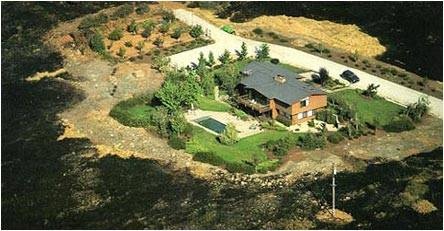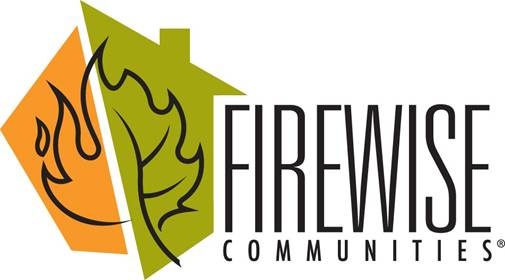Find Out What Your Fire Risk Is
Southwest Florida can experience drought conditions throughout the year, which makes North Port susceptible to wildfires. Learn about the history of wildfires in your neighborhood. Be aware of recent weather. Are roads leading to your property clearly marked? Are the roads wide enough to allow firefighting equipment to get through? Is your house number visible from the roadside?
Learn about drought index
Learn and Teach Safe Fire Practices
- Build fires away from nearby trees or bushes.
- Always have a way to extinguish the fire quickly and completely.
- Install smoke detectors on every level of your home and near sleeping areas.
- Never leave a fire--even a cigarette--burning unattended.
- Avoid open burning completely, and especially during dry season.
Always be ready for an emergency evacuation. Evacuation may be the only way to protect your family in a wildfire. Know where to go and what to bring with you. You should plan several escape routes in case roads are blocked by a wildfire.
Create Safety Zones Around Your Home
All vegetation is fuel for a wildfire, though some trees and shrubs are more flammable than others. To reduce the risk, you will need to modify or eliminate brush, trees and other vegetation near your home. The greater the distance is between your home and the vegetation, the greater the protection.
Create a 30-foot safety zone around the house. Keep the volume of vegetation in this zone to a minimum. Swimming pools and patios can be a safety zone and stone walls can act as heat shields and deflect flames. In this zone, you should also do the following:
- Remove vines from the walls of the house.
- Move shrubs and other landscaping away from the sides of the house.
- Prune branches and shrubs within 15 feet of chimneys and stove pipes.
- Remove tree limbs within 15 feet of the ground.
- Thin a 15-foot space between tree crowns.
- Replace highly flammable vegetation such as pine, eucalyptus, junipers and fir trees with lower growing, less flammable species. Check with the Florida Division of Forestry or garden store for suggestions.
- Replace vegetation that has living or dead branches from the ground-level up (these act as ladder fuels for the approaching fire).
- Cut the lawn often keeping the grass at a maximum of 2 inches. Watch grass and other vegetation near the driveway, a source of ignition from automobile exhaust systems.
- Clear the area of leaves, brush, evergreen cones, dead limbs and fallen trees.
Create a second zone at least 100 feet around the house. This zone should begin about 30 feet from the house and extend to at least 100 feet. In this zone, reduce or replace as much of the most flammable vegetation as possible. If you live on a hill, you may need to extend the zone for several hundred feet to provide the desired level of safety.
Clear all Combustibles within 30 Feet of any Structure

- Ask the power company to clear branches from power lines.
- Avoid using bark and wood chip mulch.
- Stack firewood 100 feet away and uphill from any structure.
- Store combustible or flammable materials in approved safety containers and keep them away from the house.
- Keep the gas grill and propane tank at least 15 feet from any structure. Clear an area 15 feet around the grill. Place a ¼ inch mesh screen over the grill. Always use the grill cautiously but refrain from using it all during high-risk times.
Protect Your Home
Remove debris from under sun decks and porches.
Any porch, balcony or overhang with exposed space underneath is fuel for an approaching fire. Overhangs ignite easily by flying embers and by the heat and fire that get trapped underneath. If vegetation is allowed to grow underneath or if the space is used for storage, the hazard is increased significantly. Clear leaves, trash and other combustible materials away from underneath sun decks and porches. Extend 1/2-inch mesh screen from all overhangs down to the ground. Enclose wooden stilts with non-combustible material such as concrete, brick, rock, stucco or metal. Use non-combustible patio furniture and covers. If you're planning a porch or sun deck, use non-combustible or fire-resistant materials. If possible, build the structure to the ground so that there is no space underneath.
Enclose eaves and overhangs.
Like porches and balconies, eaves trap the heat rising along the exterior siding. Enclose all eaves to reduce the hazard.
Cover house vents with wire mesh.
Any attic vent, soffit vent, louver or other opening can allow embers and flaming debris to enter a home and ignite it. Cover all openings with 1/4 inch or smaller corrosion-resistant wire mesh. If you're designing louvers, place them in the vertical wall rather than the soffit of the overhang.
Install spark arrestors in chimneys and stovepipes.
Chimneys create a hazard when embers escape through the top. To prevent this, install spark arrestors on all chimneys, stovepipes and vents for fuel-burning heaters. Use spark arrestors made of 12-gauge welded or woven wire mesh screen with openings 1/2 inch across. Ask your fire department for exact specifications. If you're building a chimney, use non-combustible materials and make sure the top of the chimney is at least two feet higher than any obstruction within 10 feet of the chimney. Keep the chimney clean.
Use fire resistant siding.
Use fire resistant materials in the siding of your home, such as stucco, metal, brick, cement shingles, concrete and rock. You can treat wood siding with UL-approved fire retardant chemicals, but the treatment and protection are not permanent.
Choose safety glass for windows and sliding glass doors.
Windows allow radiated heat to pass through and ignite combustible materials inside. The larger the pane of glass, the more vulnerable it is to fire. Dual- or triple-pane thermal glass, and fire resistant shutters or drapes, help reduce the wildfire risk. You can also install non-combustible awnings to shield windows and use shatter-resistant glazing such as tempered or wireglass.
Prepare for water storage; develop an external water supply such as a small pond, well or pool.
Other safety measures to consider at the time of construction or remodeling:
- Choose locations wisely; canyon and slope locations increase the risk of exposure to wildland fires.
- Use fire-resistant materials when building, renovating, or retrofitting structures.
- Avoid designs that include wooden decks and patios.
- Use non-combustible materials for the roof.
- The roof is especially vulnerable in a wildfire. Embers and flaming debris can travel great distances, land on your roof and start a new fire. Avoid flammable roofing materials such as wood, shake and shingle. Materials that are more fire resistant include single ply membranes, fiberglass shingles, slate, metal, clay and concrete tile. Clear gutters of leaves and debris.
Firewise
Is your home FireWise? For more information on how to reduce the risk of wildfire affecting your house, visit the Firewise website.

Ready, Set, Go!
Proactive mitigation around your property, preparation, early notification, and early evacuation can help protect you, your household and your property. In conjunction with the Ready, Set, Go! Program, NPFR and the Florida Forest Service have created an Action(PDF, 13MB) Guide that provides tips and tools you need to prepare your home, your property and your household for a wildland fire threat, to have situational awareness when a fire starts and to act early as directed by local officials.
Remember, all efforts to improve defensible space on your property can decrease property damage and help firefighters with suppression efforts. Taking advance personal action can result in improved safety for all involved.